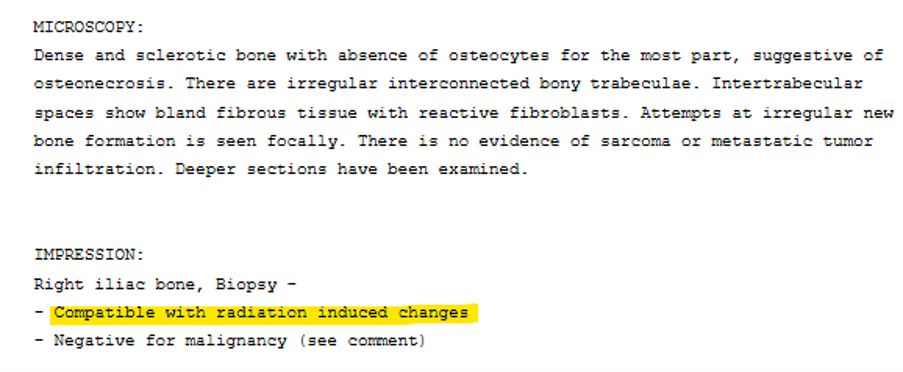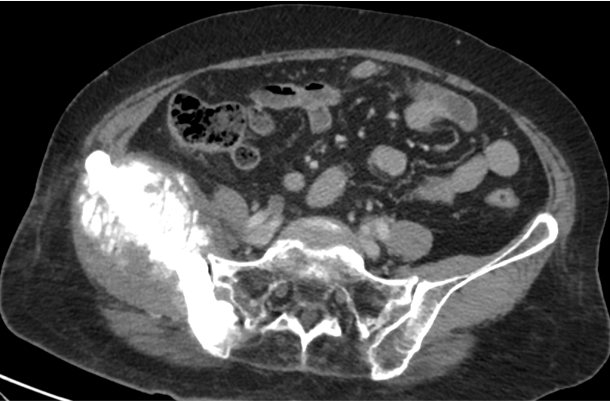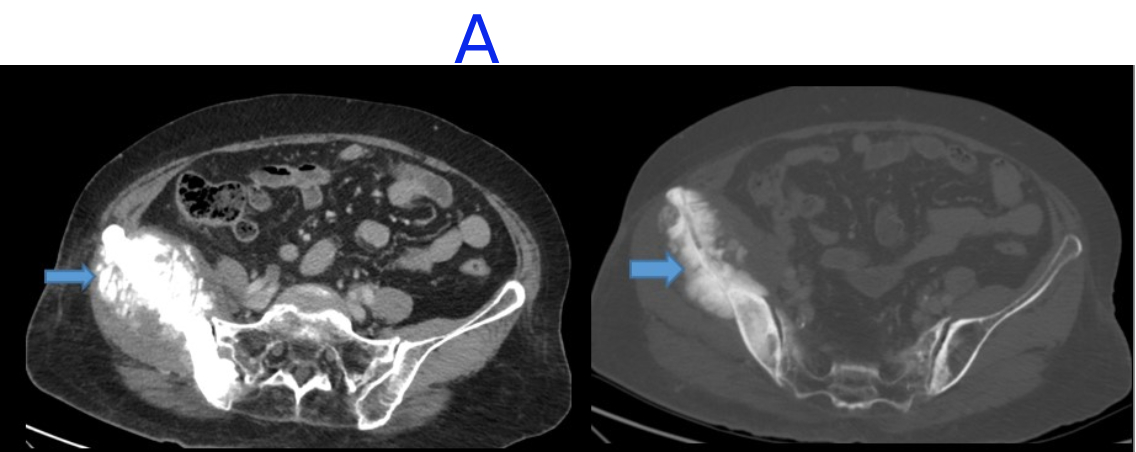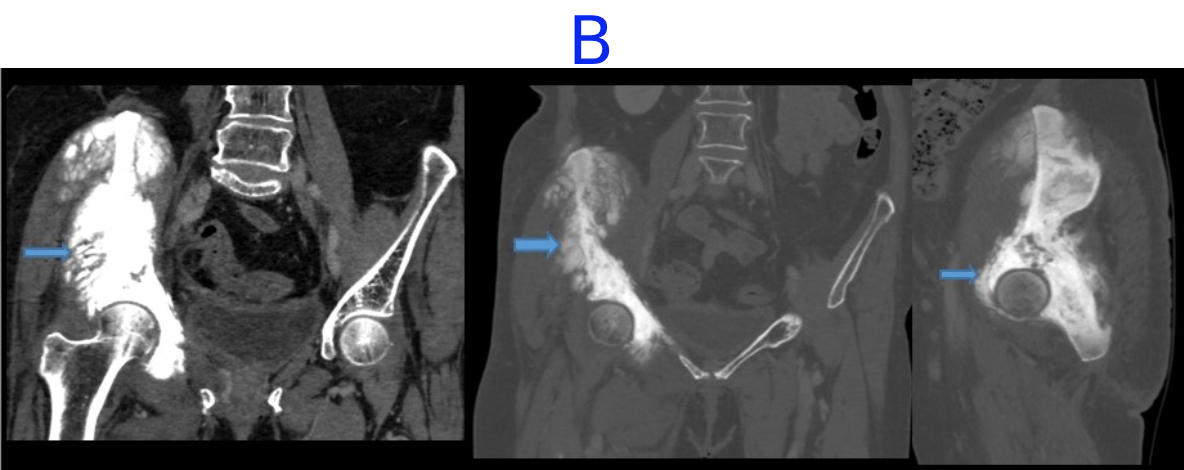A 67 year old female, known case of previous Ca Cervix stage IV A. Underwent neo-adjuvant chemo followed by concurrent chemotherapy and radiotherapy 15 years ago. Now complains of right hip pain.
Legends A:-
- Diffuse sclerosis and expansion involving the right iliac bone associated with a sunburst type of periosteal reaction.
- There is associated soft tissue mass involving of right iliacus, iliopsoas muscle, gluteal medius and minimus, obturator internus and externus muscles.
Legends B:-
- Diffuse sclerosis and expansion involving the right iliac bone associated with a sunburst type of periosteal reaction.
- There is associated soft tissue mass involving of right iliacus, iliopsoas muscle, gluteal medius and minimus, obturator internus and externus muscles.
- Features are suggestive of malignant bone tumor, most likely
- osteosarcoma. A metastasis is less likely.
- Differential: Radiation induced osteosarcoma
- CT guided pelvic bone Biopsy was performed.
- HPE report:

DISCUSSION :-
- Radiation-associated sarcoma is a well-recognized but rare complication of radiation therapy.
- Radiation-associated sarcoma may arise many years after radiation therapy.
- Definition: Radiation induced sarcoma (RIS) as a histologically confirmed sarcoma in a prior irradiated field, where there was either no microscopic lesion or a radiographically proven nonmalignant lesion, and diagnosed from 6 months to 6 years.
- Secondary RIS have, for the most part, demonstrated worse prognoses than primary sarcomas.
- Reasons for these reported poor prognoses of RIS are multiple and include late diagnosis with metastatic disease, high/advanced grade of tumor at diagnosis, surgical difficulty due to tumor size/location, inability to provide full dose radiation therapy in a previously irradiated field and limited chemotherapy options after prior chemotherapeutic regimens
- Malignancies of the pelvis that are commonly treated with radiation therapy include prostate, rectal, and cervical carcinomas.
- A relative risk of 22 for radiation-associated sarcomas after treatment of cervical carcinoma, with a median latency period of 12.5 years.
- The reported imaging features of radiation-associated sarcoma in the pelvis are nonspecific, but radiation-associated sarcoma generally presents as a soft-tissue mass with or without bone destruction and has a predilection for extension into the posterior gluteal tissues.
MANAGEMENT:-
- Surgical intervention with negative margins is the most important factor affecting long-term survival with more data needed to be obtained for reirradiation and chemotherapy.
REFERENCES:-
- Kristenson S, Mann R, Leafblad K, Cook B, Chang J. Radiation-induced osteosarcoma following treatment of Ewing's sarcoma. Radiol Case Rep. 2019 Nov 11;15(1):89-94. doi: 10.1016/j.radcr.2019.10.021. PMID: 31762864; PMCID: PMC6854073.
- O'Regan K, Hall M, Jagannathan J, Giardino A, Kelly PJ, Butrynski J, Ramaiya N. Imaging of radiation-associated sarcoma. American Journal of Roentgenology. 2011 Jul;197(1):W30-6.
Dr ANITA NAGADI
Senior Consultant Radiologist
MHRG
Dr NEHA SATHYANARAYANA
Radiology Resident
MHRG






